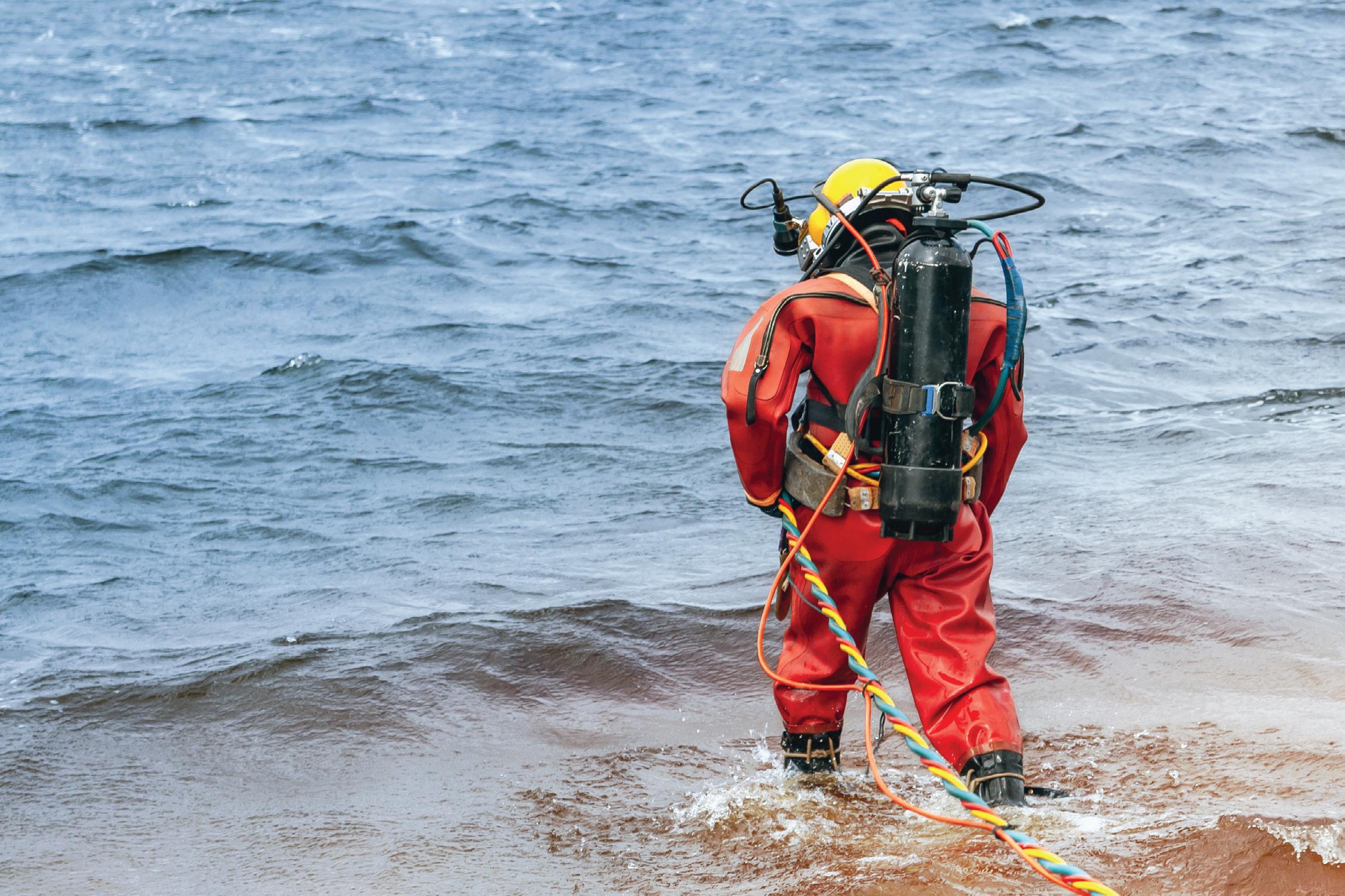
4 minute read
Diving in dark water
Nick Bailey, Discovering Safety — Diving Project lead, Health and Safety Executive offers a new take on public safety diving
Discovering Safety is an ambitious programme, which aims to bring about a step change in global health and safety performance using data and analytical techniques to provide new insights. As part of this research programme we have been looking at the current and past aspects of one sector of the diving industry, that of Public Safety Diving.
RISK AWARENESS Diving is a high risk activity where the worker is in an environment hostile to normal human existence and requires a life support system and knowledge of physiological limitations to be able to carry out the work required. Diving work, whether from the offshore platforms of oil and gas infrastructures or in a dive school providing SCUBA experiences to children in a swimming pool, takes place throughout the UK and internationally.
Police or Fire and Rescue personnel may be professional or part time members of a Public Safety Diving team. Their tasks can be challenging and unpleasant, such as looking for bodies following an incident or searching for evidence to support crime investigation officers. These people enter mostly dark cold water that may be swift moving, polluted, or contaminated with debris or pathogens. In some areas of the world there can be apex predators such as sharks or crocodiles in the water as well.

UNDERSTANDING RISK IN PUBLIC SAFETY DIVING For the study we have looked at how UK Police Diving (as all public safety diving in the UK is
done solely by the Police), including regulation, training and supervision, compares to that of Public Safety divers around the world. Within the UK, only a relatively few minor incidents have been reported over the past fifteen years whereas, over the same time period on a global scale, around 50 Public Safety divers have lost their lives or been involved incidents.
To get a deeper understanding of the work undertaken, the supervision of the diving, and the training that a new diver or experienced diver would need to undertake, a questionnaire was sent to Public Safety dive teams, personnel and training providers around the world. With the data collated, a workshop was arranged and those that had responded to the questionnaire were invited to take part. Those unable to attend were asked to send in questions or put forward points to be discussed.
The points that stood out during these discussions were the need for training and refresher training that was suitably risk assessed and overseen by competent trainers. A number of the incidents seen overseas were during training exercises where the diver either became separated from their buddy (not a practice carried out in the UK due to low visibility conditions) or ran out of gas. A widespread view was also held that Public Safety divers should not enter the water without a lifeline or voice communication system.
HOW PUBLIC SAFETY DIVING WORKS Almost all UK Police diving is carried out using a surface supply method to ensure that the diver cannot run out of gas while they are underwater. UK Police divers will also wear a bailout cylinder that can act as an independent supply if needed. Furthermore the umbilical back to the surface for the deployed diver can be used by the standby diver, who is dressed and ready to enter the water and can follow the umbilical and reach the diver quickly.

These divers may also be required to search in fast flowing water that can have other dangers that they need to be aware of. Trying to carry out a search whilst you are being forced along the river bed is not very comfortable. For example the flow of water can start to lift the mask off the diver’s face during movement causing it to flood even though the mask is designed to be a positive pressure system. Also when in flowing water the surface cover may obscure submerged items travelling within the water.
The study’s final outcome is to be able to provide guidance to Public Safety dive teams around the world, enabling them to work in a safer manner to reduce the number of incidents that occur within the Public Safety diving community. If you would like to know more about this project or other work within the programme and how you can get involved then please visit our website www.discoveringsafety.com






